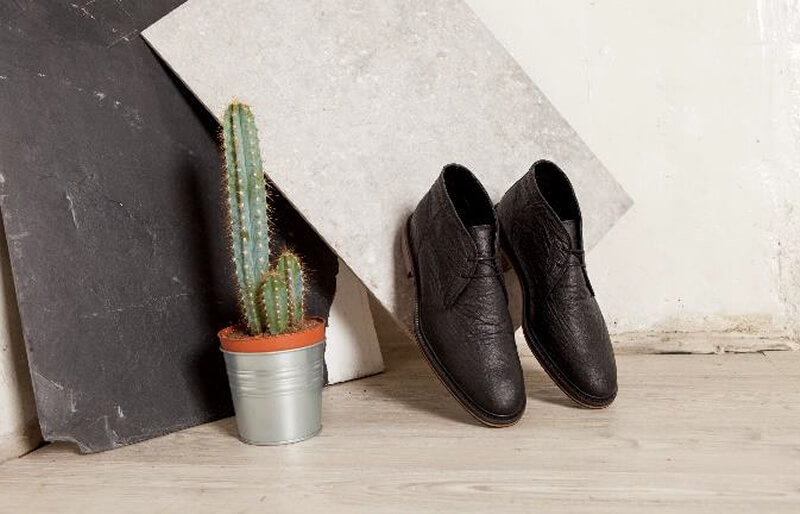According to Digital Arts Online, “Society is reimagining and wrestling with identity at a global level – such as the right to privacy, migration and displacement and perception of women in the media. To help navigate through this change we look to uncompromising clarity.” 2017 is the entire year that has been swallowed up by 2016's political drama. Starting from Brexit and ending with Trump’s initiated Twitter fake news trend, continued by social media driving the era of fake, art is here to be our escape. 2017 is about going back to our roots, being true to ourselves and diving into our cultural heritage.
Words: Aleksandra Medina
Image: Pinterest.com
On the other hand, as we are struggling to keep our planet healthy for the future generations and as we're searching for sustainable options, art, fashion and technology are looking into reusing and upcycling to minimise our impact on the planet. Some relatively new trends have emerged from this, such as slow fashion and organic, vegan lifestyle, with a growing number of people converting to an environmentally-friendly lifestyle. Elements of nature and simplicity can be seen everywhere. With us being drowned in digital information, “society is craving raw emotion, unfiltered imperfection, individuality and non-manufactured resources," says Digital Arts Online. So, in 2017, authenticity means merging social media and technology with the return to nature and our roots. According to Forbes, “authentic social media is the modern day testimonial”.
2017 is the year, where artists strive to fight “uncertainty with authenticity, raw humanity, craftsmanship and simplicity,” states Digital Arts Online. While the majority of the art community is counter-reacting to the messy politics by mixing art with activism, the simple elements of art in our everyday life are designed to bring peace and simplicity back into our lives.
1. Colour
Pantone Colour of the Year: 'Greenery'
Image: Laughingsquid.com
Pantone crowned 'greenery' as the colour of 2017, because of its association with environment, life and new beginnings. The company predicts that the colours used the most will be red, blue and green. These staple colours are an unconscious return to the basics at complex times.
Image: Pinterest.com
2. Branding
There’s a demand for the truth. No more emphasis is placed on mere packaging, as people want to know what’s really inside. Transparent packaging has evidently become more popular, as it allows people to directly inspect the product. As we become more conscious about where our product comes from, how it’s made and its impacts on the environment, we look for simplicity and straightforward answers. Furthermore, as we become more global, packaging and advertising needs to be cross-cultural, which requires going back to basics and authenticity – communicating simple lines and bold colours.
Image: Musemag.com
3. The New Media
With more and more new bloggers in the social media world, audience are looking to follow someone who will bring forward authentic material. This includes realistic depictions of travel destinations from travel bloggers to tell their real experience, food bloggers to honestly review restaurants. And also, the huge success of candid photos that are seemingly accidental and un-staged speak louder than words, when analysing what people expect from fashion bloggers. With phone cameras advancing so quickly and catching up to the quality of a professional camera, a larger group of people, who don’t consider themselves photographers, can upload quality content online. As a result, things are no longer being represented by trained and paid photographers only, but everyday people can share their authentic side of the story with high quality images as well.
4. Functionality
Image: Architecturebeast.com
“Maximise white space and layout that’s simple, clean, and authentic. Additionally, editorial photography will highlight realities that appeal to modern consumers and design teams who want to embrace clarity and transparency. Clean, functional, and unfiltered materials lead the pursuit of the ordinary,” Adobe writes on its Creative Connection blog.
5. Fashion
Image: Bboheme.com
With the raise of the slow fashion movement, which preaches the capsule wardrobe and eco-materials, designers are looking into new ways of developing clothing that withstands trends. Fashionistas are looking for clothing that communicates personal style and values, and is not quick-lived and trendy per se. There is a rise of start-up brands finding creative solutions to one of the world’s most polluting industries – there is even an advancement in non-conventional fabrics made from plastic bottles, fish nets and pineapple.
Image: Pinterest.com
6. Homeware
It has been proven in studies that our health betters with exposure to nature. Throughout 2017, we will see homeware being incorporated with nature, thus finding creative solutions to add more nature to big cities. Plants in concrete structures and botanic wallpapers, as well as innovative flower pots have been a success. “The celebration of uncontrolled processes and rawness will be desired in homeware surfaces; salt-patterned tabletops, charcoal-blazed tiles, and patterns that mimic rock textures will bring an engineered organic quality into interior aesthetics. Upcycled resources, such as wood, rock and metal will be dominant,” confirms Digital Arts Online. The success of the DIY movement has shown that people love to personalise items and bring their own authenticity to a product, thus confronting mass-production and consumerism with the use of personalised and handmade goodies.






